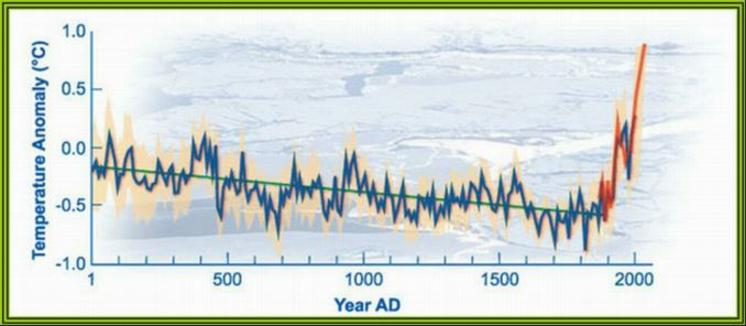By Anna Fifield in Iqaluit Published: February 8 2010 22:33
When Joshua Kango heads out onto the ice near his home on the edge of Canada’s Frobisher Bay these days, a half-frozen expanse of sea just south of the Arctic Circle, he finds he has to tread much more carefully.
A 64-year-old Inuit who has been hunting seals and caribou in the area all his life, Mr Kango has noticed alarming changes in the ice around the bay over the last decade or so, a potentially perilous development.
“The ice is getting thinner because there is now warm water flowing underneath it,” says Mr Kango, wrapped up in a suit, gloves and boots made from harp and ring seals he has caught. Hunters here traverse the white moonscape, often for days at a time, and thought they knew the ice. “Before the polynyas [open waters between islands] used to freeze over and we could snow mobile or dog-sled over the top of them. Not any more.” Mr Kango says the changes are most noticeable in the spring and autumn: “In the fall, the ice formation takes a lot longer than it used to. In the springtime, the ice melts really fast.”
His brother-in-law, Pitseolek Alainga, adds that the changes are compounded by their unpredictability. “It doesn’t stay the same from year to year. One year it’s really cold, the next it’s kind of warm,” he says.
Inuit hunters like Mr Kango and Mr Alainga are witnessing the effects of global warming first-hand, and what they are seeing should ring alarm bells for the rest of the world.
“The people of the north are the first to feel the effects of global warming,” says Eva Aariak, premier of Nunavut, the territory of which Iqaluit is the capital.
The polar ice helps keep the earth cool, as snow and ice reflect sunlight while the permafrost traps methane, a potent greenhouse gas. But a new report published by the Pew Environment Group says that global warming is altering the Arctic ecosystem in a way never seen before by humans. It predicts that the Arctic, which has had sea ice for more than 800,000 years, might lose summer sea ice as soon as 2030 and estimates that the melting Arctic will lead to a 3-to-6°C increase in the earth’s temperature over the next century. During the Ice Age, the earth’s temperature changed by 4.5°C.
“The warming effect from the Arctic is not a future event. It’s happening right now,” says Scott Highleyman, director of Pew’s international Arctic programme. The report’s authors estimated that the loss of Arctic snow, ice and permafrost will have an effect on warming equivalent to 42 per cent of the US’s annual carbon emissions, or the same as 500 new coal power plants, this year alone. By the end of the century, the effect is expected to have doubled.
The scientists multiplied this carbon dioxide equivalent by the social cost of emissions to get the economic value of the loss. They concluded that it would cost the world between $61bn and $371bn this year. This will rise to $2,400bn by mid-century and ten times that by 2100.
“The Arctic is the planet’s air conditioner, and it’s starting to break down,” says Eban Goodstein, a resource economist at Bard College in New York and one of the authors of the study. “Half measures to stop global warming are unlikely to succeed, and delaying action will mean future environmental costs could be overwhelmed by the massive pulse of heating from a broken air conditioner,” he says.
At the same time as the ice melts, the plant life is changing. Greg Henry, a geologist at the University of British Columbia and expert on the Arctic tundra, reports a “huge increase” in the growth of plants in the 30 years he has been monitoring the Arctic, saying this is a direct response to the climate warming.
“There are more woody plants, which take longer to decompose and insulate the ground, making it warmer, and there are also more shrubs with leaves. This makes the surface darker, which means it absorbs more light and then gives off more heat,” Mr Henry says, estimating the temperature has increased by 1°C a decade, among the highest on the planet. “So warming begets warming,” he says.
Ms Aariak’s government is looking into alternatives to the diesel energy used in Nunavut – the territory has plenty of sunshine and wind, she points out – to reduce the area’s carbon footprint, but Inuit environmentalists are urging more action from the world’s biggest polluters.
“We have been saying that you [big economies] are bringing harm to an ancient way of life but the response is always that it costs too much to stop, that they can’t afford to change,” says Sheila Watt-Cloutier, a local environmental activist. “We say that you cannot afford not to save the Arctic.”
Welcome to By 2100!
This Blog is designed to be a Diary of Events illustrating Global Climate Change, and where it will lead.
Commentary is encouraged, but this Blog is not intended for discussion on the Validity of Climate Change.
Category Labels
- Climate Events (85)
- Climate Solutions (45)
- Videos (42)
- Climate Statistics (39)
- The Deniers (34)
- Humour (15)
- Basic Information (5)
Tuesday, February 9, 2010
Subscribe to:
Post Comments (Atom)
www.know-the-number.com
Our Climate is Changing!Please download Flash Player.

No comments:
Post a Comment